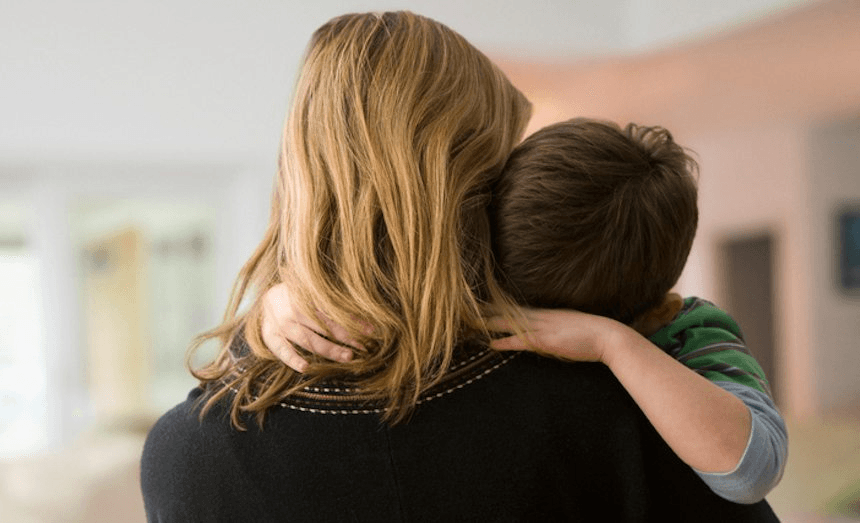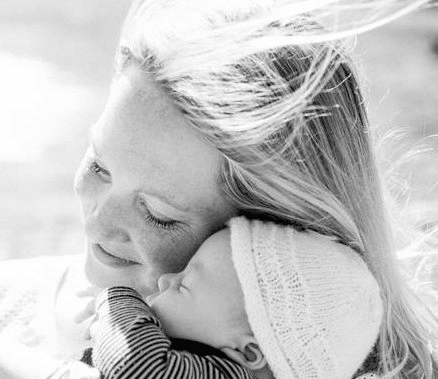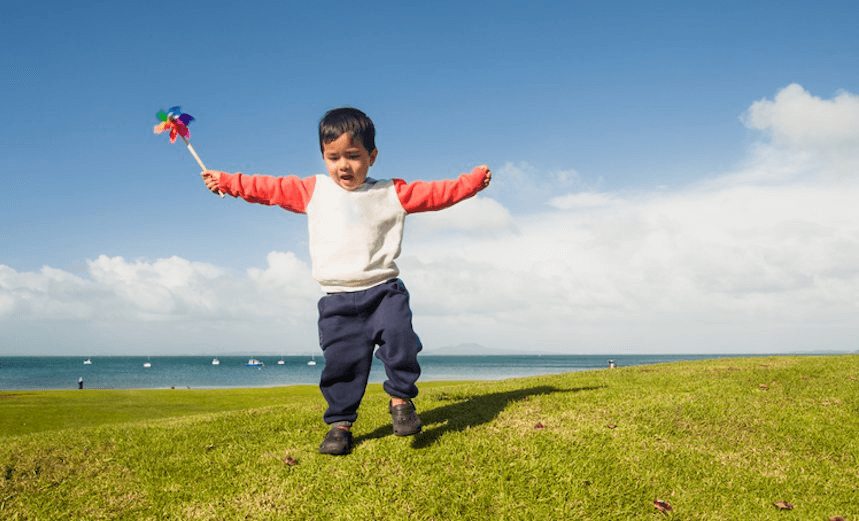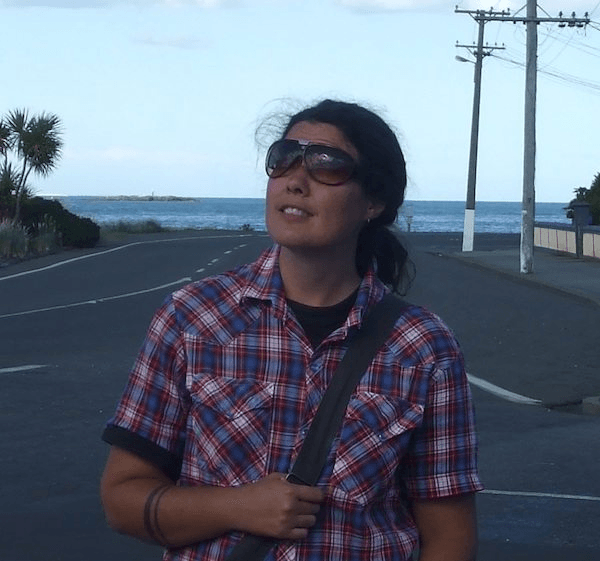Key regulations aimed at preserving children’s connections to whakapapa and their culture are set to be dropped as part of a major shake up of New Zealand’s child welfare system. Kim McBreen explains why that’s terrible news for our most vulnerable Māori children.
You may have heard the Crown have had a series of bad reports for their child welfare work. Really bad reports. So bad that the Crown has set up a new ministry and is proposing changes to the Children, Young Persons and their Families Act. What they really need to do is give up and admit this isn’t their thing.
The Crown has been horrible at child welfare. The Crown has taken children from families for almost arbitrary reasons, like skipping school or being poor – that in itself is an inexcusable act of violence. It has taken those children from safe homes and put them in dangerous situations where many have been abused and neglected. Can you imagine how you would feel if this was your kid? How angry, devastated and useless you might feel, what that would do to a whānau? Māori have been especially targeted, both in who the Crown has taken and who is most likely to be abused. Two Crown reports last year showed the extent of the Crown’s responsibility for the abuse of children. The Crown has blamed CYF, which is kind of like when my kid blames her foot for pushing the cat. According to the Crown, it’s all CYF’s fault: we need a new model, the law needs simplifying. The changes that the Crown has announced are a signal that there will be no real change – it will be the same stuff with a different name.
Many reports have identified the problem, but the Crown doesn’t get it. The problem is not the name of the ministry or that the law was too complex. The problem is that the Crown is colonising, controlling and authoritarian. That strategy has failed, it is time for a different strategy – like sharing the responsibility with the communities that are most affected. A Crown report in the 1980s identified that institutional racism was shutting Māori out of child welfare decisions, while at the same time Māori children are the majority in the child welfare system. For decades, Māori have argued that the best solution for our children is to give the responsibility to Māori.
The Crown seems allergic to the idea of sharing power. Like so many patriarchs, the only way it knows to respond to criticism is to tighten control. But surely we all want the same thing: an actual solution. A solution means solving this mess, so we won’t have endless reports on how useless and abusive our child welfare system is, so children are protected and stay out of the system, so they don’t carry that trauma through their lives, so we are moving towards a future we want.
To protect children and undo the damage that the Crown has inflicted on whānau, the enduring solution is to take that power from the Crown, and give decision making, resources and responsibility to appropriate rōpū, communities, hapū, iwi. The Crown’s task then becomes supporting rōpū to prepare for that responsibility. Our task is to work out how to make it happen.
Some backstory: institutional racism and unconscious bias
When I was born 40-odd years ago, my mother was very young and single, and so I was taken immediately for adoption. The Adoption Act 1955 was what some people would call colour-blind. It didn’t refer to culture or ethnicity; all adoptions were treated the same. Other words for that are institutionally racist, or assimilationist, or colonising. In practice, it meant Māori understandings of wellbeing, adoption and whakapapa were ignored and all adoptions were according to Pākehā ideas of what was best: closed adoptions, a complete break between the birth family and the adopting family. By Māori standards, that’s abuse.
My mother was white and no attempt was made to find out the ethnicity of my father (the Adoption Act pretty much excluded fathers). I had pale skin and dark hair, so I was white enough – the social worker didn’t ask about my ethnicity. Despite that, when my adopting parents asked, the social workers guaranteed that I was white.
I was adopted and told that I was Pākehā, and that was the story I grew up with. It’s a story that became harder and harder to believe, but in this monocultural society, it nevertheless stole any opportunity for me to grow up with te reo, tikanga or mātauranga Māori. I grew up with one part of my cultural heritage well-represented, and another part denigrated, so that I will never feel at home among people and in places where I belong.
I am well aware that I was luckier than many. Being born pale skinned and female meant I was adopted as a baby, which meant I was destined to have it easier than those who were not. But my history gives me some small knowledge of what it is to be disconnected from whakapapa and shut out of belonging.
I am sharing this story because it shows what happens when we don’t require social workers to think outside their cultural context. If we do not require social workers to consider whakapapa and cultural connection, most will not. If we make our law colour-blind, in practice it will be white, assimilationist, colonising. And it will hurt children. That’s why, nearly 30 years ago, Māori fought hard to have children’s connections to whakapapa and culture protected in the Children, Young Persons and their Families Act. That’s why, when I heard that the Minister of Social Welfare was proposing to drop those protections, I was so shocked that I thought it was a misunderstanding.
More backstory: centuries of whānau nurturing children
Traditionally, Māori society is whānau centred, and Māori whānau are child centred. Whakapapa is at the heart of our philosophy, the relationship between tūpuna and mokopuna is especially celebrated in our literature, and our metaphors for identity and belonging are all about mothering. When Europeans arrived, some were appalled enough that they wrote about what terrible parents Māori were, especially Māori men, who were far too loving and attentive to children – not at all manly behaviour. (If you are interested in traditional Māori parenting, Mana Ririki produced a fantastic report.)
Over the next several decades, Europeans got stuck in, teaching Māori parents good Christian spare-the-rod-spoil-the-child parenting, and teaching Māori men patriarchal family values. At the same time that the Crown took Māori wealth and resources, it imposed capitalism. The combined effect was impoverishment and chasing wages for survival (when my iwi, Ngāi Tahu, signed Te Tiriti they were responsible for almost all of Te Waipounamu, Rakiura and surrounding islands; between 1844 and 1860, they were forced to sell effectively all that land for less than £9000. In that short time, thousands of people who had been collectively self-supporting and self-determining became politically and financially dependent on the Europeans who had taken everything. Can you imagine how that felt?).
Europeans introduced diseases that killed thousands (in the first 100 years of contact with Europeans, the Māori population fell from around 200,000 to 42,000). The Crown dismantled Māori law and systems that kept whānau safe and healthy, criminalised tikanga, locked people up for trying to hold on to their land, banned te reo Māori from schools to stamp out not just te reo, but all the knowledge that it carries. And Māori were still expected to fight for Britain in two horrific world wars.
After a hundred years of this, Māori were still resilient. In the 1940s, research on Māori mental health focused on why Māori were so much healthier than Europeans (one third the incidence of mental disorder)1. Pākehā researchers’ explanation was that the whānau was such a nurturing mechanism that it was protecting Māori mental health from even the ongoing violence of colonisation. They predicted that as whānau structures were dismantled, Māori mental disease would increase to Pākehā rates. This could have been a turning point for Māori and Pākehā – where would we be if Pākehā had paid attention to their own researchers saying whānau are a healthier institution than nuclear families? Instead, the Crown has continued with policies to dismantle whānau, and privilege small family units that provide a dependent, mobile workforce.
Colonisation has treated generations of Māori to continuous violence, trauma after trauma after trauma. At the same time, the Crown has been dismantling our mechanisms of wellbeing – disconnecting us from our whenua, our whakapapa, our whānau. These experiences have created the situation we are in now, where some Māori whānau aren’t coping. They need support to heal. Instead, the Crown steps in, taking children from communities that it has attacked, and takes away those communities’ futures. Unjust, immoral, abusive – I don’t have words that adequately express how obscene this is.
Last backstory: decades of Crown endangering Māori children
That problem for Māori was clearly described in the 1987 report Puao-te-ata-tu, commissioned by the Minister of Social Welfare. Already, Māori made up the majority of Social Welfare institutions’ clientele. Puao-te-ata-tu reported that institutional racism in the Department of Social Welfare, the Children and Young Persons Act and the courts made it impossible for those institutions to achieve their goals. They defined institutional racism as “monocultural institutions which simply ignore and freeze out the cultures of those who do not belong to the majority. National structures are evolved which are rooted in the values, systems and viewpoints of one culture only.” Whenever people talk about one law for all, this is what they mean: one law based entirely on Pākehā values and priorities, applied to all of us.
The solution Puao-te-ata-tu recommended was biculturalism. Not the token biculturalism we think of now, where all the values and goals of our institutions and laws are Pākehā, but we are allowed the occasional pōwhiri or karakia so everyone can feel culturally enriched. But real biculturalism, where the values, cultures and beliefs of Māori are as central as those of Pākehā in all aspects of governance; where power is re-invested in Māori institutions – whānau, hapū and iwi. Puao-te-ata-tu identified that Māori succeed when rangatiratanga is recognised and supported, and therefore recommended that Māori should be resourced to solve the problems Māori are facing. The report’s recommendations would have transformed social welfare institutions from their philosophical foundations to their practices. The advice could have turned this crisis around 30 years ago. Thousands of children could have been spared the CYF experience. And the reality of that experience is only now becoming fully known.
Last year the Confidential Listening and Assistance Service completed their final report on experiences of abuse and neglect in state care up to 1992. The Service described their findings as “horrifying” – if anything, that’s an understatement. For decades, children were removed from homes, sometimes for little reason, and placed in situations where they would endure neglect, physical, sexual and psychological abuse, with nowhere to complain, no-one who would help. Thousands of children. And as bad as it was generally, Māori had it hardest – Māori children were more likely to be put in care, for more trivial reasons, and to be treated more harshly. I challenge anyone to read that report and not be outraged (the report is only public because the Otago Daily Times made an OIA request).
There are predictable outcomes. The report states: “It has become clear to us that the neglect and abuse of children and the previously frequent practice of locking children up in institutions has contributed to a dark legacy of suffering and crime in this country.” Principal Youth Court Judge Andrew Becroft also commented last year on the link between state care and crime – 83 percent of prison inmates under 20 have been in CYF care. State ‘care’ has been creating enduring problems that will only grow.
The Crown’s response shows the level of compassion and empathy we can expect. There is no denying that children and their families suffered, so the Crown cannot avoid paying some compensation. But it will not apologise.
Another report from last year, this time from the Crown appointed Children’s Commission, looked at the recent performance of Child, Youth and Family. It wasn’t encouraging. They say “We don’t know if children are better off as a result of state intervention… the limited data we do have about health, education, and justice outcomes is concerning.” Again, although the majority of children referred to CYF and in care are Māori, CYF does not have and does not value the knowledge, skills and experience to work with Māori. Again, they recommended transforming CYF, including focusing on building cultural capacity and partnering with iwi.
Report after report is telling the Crown that it cannot care for children, that Māori children are especially endangered by the Crown, and that the Crown needs to be partnering with Māori to ensure good outcomes for Māori children. With Māori children representing around 60 percent of children in care, it is obvious that the Crown should be doing all it can to work with Māori to turn this around.
Instead, the Crown blames its terrible record on CYF. It’s not the State treating children terribly, it’s CYF and all its predecessors (seriously—are we supposed to not understand that CYF is the State?). The State has got this under control. It’s getting good advice.
What is this whole new model? The Crown will rebrand child protection work under a Ministry of Vulnerable Children. It is immediately clear that the Crown is not taking advice from people you might expect, like its own Children’s Commissioner, who said the new name is “stigmatising and labelling”. Other places it is not taking advice from include all the aforementioned reports that demonstrated the need for a new model. Because instead of strengthening its relationship with Māori, the Crown is doing the opposite. In the legislative overhaul for their new model, the Crown is removing two important clauses for Māori: one that prioritises Māori children staying within their hapū and iwi, and another that considers the effect of decisions on the stability of Māori children’s whānau, hapū and iwi.
Labour supports the changes, with their spokesperson Jacinda Adern saying the moves are justified because of abuses of children in care of extended family. That was a sadly ignorant response. It is tragic whenever CYF places children in unsafe situations, including with unsafe whānau. It is an example of CYF making bad decisions for children, and why Māori want to be making those decisions ourselves. CYF’s bad practice is no excuse for removing provisions to protect children in the context of whānau. To make that argument is transparently racist – Māori cannot be blamed for the Crown’s bad decisions. Likewise, it is unbelievable that social workers cannot find safe and loving whānau within a child’s whakapapa. As Tariana Turia has said of her iwi “You can’t tell me that within 8000 people connected by our river, you cannot find someone to care for a child.” This is true of all our whānau and hapū.
Tweaking an abusive model: What’s wrong with the proposed changes?
The clauses the Crown is removing from the Children, Young Persons and their Families Act consider the effects of decisions on whānau, and prioritise placing a child within their hapū or iwi. These clauses came from the Puao-te-ata-tu report I mentioned earlier, which found that the Crown would continue to fail Māori if it did not overcome institutional racism. The report made many recommendations, most of which have not been met, but two findings are particularly relevant.
Firstly, in the context of institutional racism, social workers need to be directed to recognise children as members of whānau and hapū, whose wellbeing is necessarily linked to the child’s wellbeing. Without that direction, social workers were taking away the ability of whānau, hapū and iwi to take responsibility and care for their children. They were contributing to problems in whānau. Secondly, in the context of institutional racism, social workers need to be directed to recognise that the well-being of Māori children includes their sense of belonging to whakapapa and whānau, and that prioritising their wellbeing includes prioritising those connections. Without that direction, social workers were not prioritising whakapapa, and children were being isolated from their whakapapa and culture. Māori fought hard to have these directions included in the CYP&F Act; removing them takes away protection for connections to whakapapa.
We need to return to the historical context of whānau, which has been deliberately destabilised by Crown policies for decades, where trauma from the violence of colonisation has created problems that means a few whānau are not currently safe, and where for decades the Crown has taken Māori children and put them in less safe situations. At this point, the only just response for the Crown would be to ask Māori how whānau can best be supported to care for children. Removing those particular clauses signals to Māori that the Crown isn’t listening and doesn’t care what we think.
The proposed changes to legislation also breach New Zealand’s international obligations. There are two relevant statements in the UN Declaration on the Rights of Indigenous Peoples, to which New Zealand is a signatory. Firstly, the declaration recognises “the right of indigenous families and communities to retain shared responsibility for the upbringing, training, education and well-being of their children, consistent with the rights of the child.” Secondly, the declaration recognises “the collective right to live in freedom, peace and security as distinct peoples and shall not be subjected to any act of genocide or any other act of violence, including forcibly removing children of the group to another group.” The UN is critical of the State’s new model, and like so many of the State’s own reports, recommends more engagement with Māori.
Is there another vision?
The Crown’s vision for child welfare seems to be to create a model that isn’t as horrifying as the one we had before. Or perhaps it is to draw a line under last year, and start with a clean slate. Either way, it’s not a vision I can buy into, and it stems from the Crown’s failure to recognise itself as the problem. Until it gets that, it will miss the point. The fundamental flaw that reproduces bad outcomes for children is that the state is colonising, authoritarian and paternalistic, especially when it comes to Māori. That will always end in abuse.
My vision, which I hope is consistent with yours, is one where communities are supported to heal, and empowered to nurture and protect their children. If that is the end goal then the tasks in the meantime are clear.
For the Crown, instead of twisting itself in knots to stop itself abusing children, the task is to support communities to prepare. This was the solution that Puao-te-ata-tu proposed. For decades, Whatarangi Winiata has argued that the only enduring and fair solution is a reallocation of resources, from the Crown to Māori. If all the resources that the Crown takes and uses in failing to protect our children were instead given to Māori, returning all responsibility to care for our children, history and experience suggests our children would be better off.
For Māori and other communities who want to take responsibility for their children, the task is to identify what is needed, and how to rebuild capacity so that our children are nurtured and safe. Many of our communities are well underway with that work.
Right now, our task is to stop the Crown from abusing another generation of children. We need to stop the changes to the Children, Young Persons and their Families Act, and we need to push for a holistic, enduring solution. Puao-te-ata-tu called it biculturalism, Whatarangi Winiata calls it rangatiratanga, I’m going to call it justice.
Hands off our tamariki.
1 Beaglehole, E and P Beaglehole 1947 Some Modern Maoris, New Zealand Council for Educational Research Series (Whitcombe and Tombs, Auckland)
Kim McBreen is from Waitaha, Kāti Mamoe, Ngāi Tahu, and also Pākehā. She lives with her partner and daughter on a quarter acre section with two cats, lots of fruit trees, and close enough to hear the ocean on a stormy evening. She is a kaimahi at Te Wānanga o Raukawa. You can read more of her writing at her blog He Hōaka.
This content is entirely funded by Flick, New Zealand’s fairest power deal. In the past year, their customers saved $358 on average, which would buy enough nappies for months… and months. Please support us by switching to them right now.




